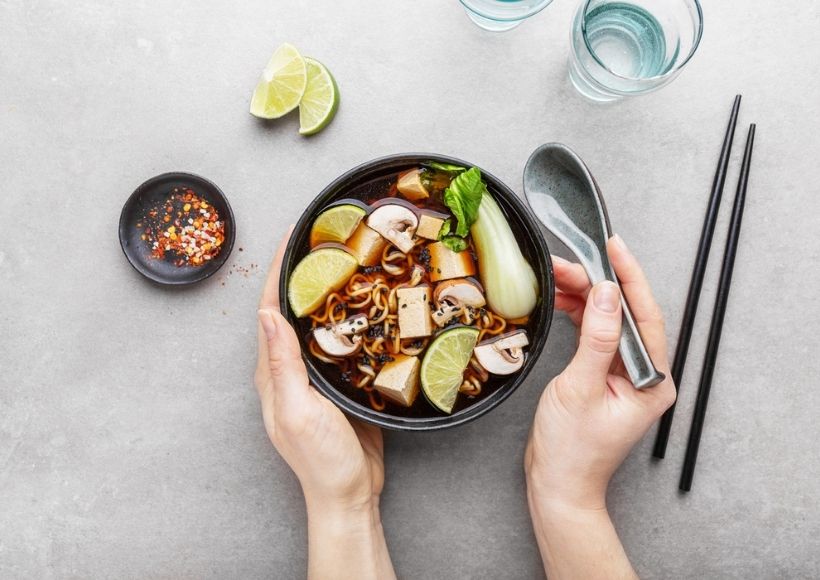Losing Weight : The Okinawa diet is an art of living that we would be well inspired to adopt.
The people of the Okinawa Islands in Japan have the highest life expectancy in the world. It is 86 years old for women and 78 years old for men. And we meet a lot of centenarians there. There is a low rate of heart disease and cancer. There is no diabetes or obesity. Yes, we live there old and in good health! In addition to environmental influences and genetic factors, the secret to the excellent health of the people of Okinawa is explained by their eating habits. Therefore, we are talking about the ” Okinawa diet,” which, like the Mediterranean (or Cretan) diet, is more of the art of living than the diet.
Table of Contents
Japanese Okinawa Diet: The Secrets Of A Healthy And Balanced Diet
Losing Weight The inhabitants of Okinawa eat a diet rich in fiber, low in calories, and close to vegetarianism: little meat on the menu but tofu and fish, the most important protein sources. Soybeans (in all its forms), cabbage, shoots, and seaweed are recommended. Plant-based foods make up about 90 percent of Okinawa’s diet, emphasizing fresh vegetables. We favor green leafy vegetables, shiitake mushrooms, and sweet potatoes in particular. The sea fish fresh (rich in omega-3) is at least three times a week. Along with rapeseed oil, they are the primary sources of fat.
No soda, wine, or coffee at the table. The flagship drink is green tea (rich in antioxidants and diuretics), or simply water. In Okinawa, sugar is also little consumed, and we do not eat cakes or pastries. Instead, many dishes are garnished with herbs, spices, seaweed. Also to be avoided: salt.
Losing Weight On average, Okinawa residents consume about 1,100 calories per day, which is well below recommended levels for adults. Quality has to be more important than quantity, and luckily the Okinawa diet is very nutritious.
Japanese Okinawa Diet: Foods Judged On Their Calorie Density
Foods are divided into four groups based on their caloric density (the caloric value per 100g of food, divided by 100).
- Foods with a caloric density of fewer than 0.8 calories per gram: zucchini, cucumbers, lettuce, seaweed, apples, oranges, water, and tea. These foods can be safely consumed in large quantities.
- Foods with a caloric density between 0.8 and 1.5 are consumed only in moderation. These include legumes, pasta, rice, white fish, potatoes, and bananas.
- Foods with a caloric density between 1.6 and 3 should only be eaten in small amounts. These are dried fruits, lean meat, bread, and fatty fish.
- Foods with a caloric density greater than 3 should only be eaten infrequently or not at all. This includes raw nuts, red meat, olive oil.
Japanese Okinawa Diet: Foods To Eat
- Vegetables (58-60%): sweet potatoes, bamboo shoots, carrots, pumpkin, radish, bitter melon, seaweed, cabbage
- Cereals (33%): millet, wheat, pasta, and rice
- Soy foods (5%): tofu, edamame and miso
- Meat and seafood (1-2%): mainly white fish, seaweed, and occasionally pork or offal
- Other (1%): tea, spices, and dashi broth
Japanese Okinawa Diet: Foods To Avoid
- Meat: beef, poultry, and processed products such as salami, bacon, ham, and sausages
- Animal products: eggs and dairy products, including milk, cheese, butter, and yogurt
- Processed foods: refined sugars, grains, snacks, and candy
- Other foods: most fruits, plus nuts and seeds
- As the Okinawa diet is quite restrictive, it can promote weight loss; however, it is not suitable for everyone. Always seek the advice of a healthcare professional.
Also Read : Write For Us – Fashion, Fitness, Beauty, Weight Loss, Health

